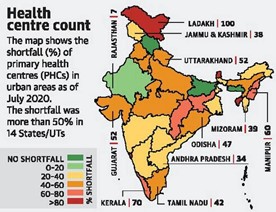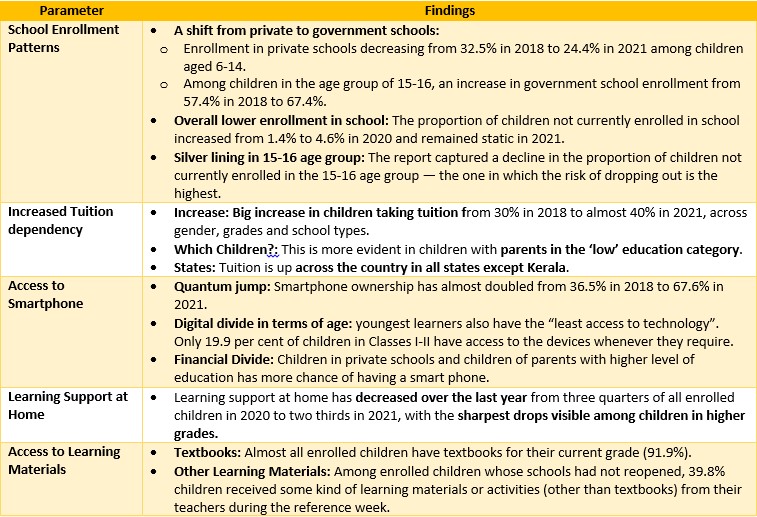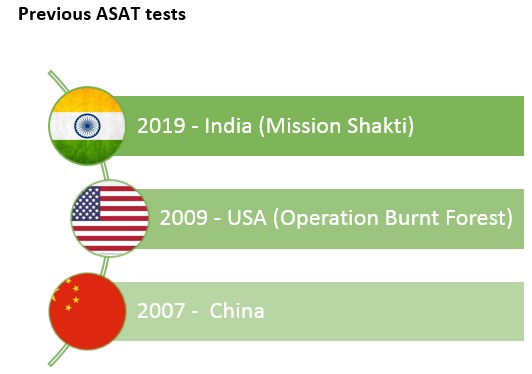Thursday, 11th November 2021
General consent to CBI
In News
Recently, the Supreme Court expressed concern over pending investigation requests by the CBI with 8 state governments that have withdrawn general consent to the CBI.
About the News
- The 2018 amendments to the Prevention of Corruption Act, 1988, makes it mandatory for the CBI to seek the Centre’s permission before registering a case of corruption against any government servant
- Thus, the Centre has come to exercise power over the CBI not just administratively, but also legally.
- Currently 8 states have withdrawn general consent to the CBI: Maharashtra, Punjab, Rajasthan, West Bengal, Jharkhand, Chhattisgarh, Kerala, and Mizoram.
- Withdrawal of Consent means that the CBI will not be able to register any fresh case involving officials of the central government or a private person in the state without the consent of the state government.
What is general consent?
- The Law Behind: According to Section 6 of the Delhi Special Police Establishment (DSPE) Act, 1946, CBI needs the consent of the State government for exercise of powers and jurisdiction.
- There are two kinds of consent: case-specific and general. Given that the CBI has jurisdiction only over central government departments and employees, it can investigate a case involving state government employees or a violent crime in a given state only after that state government gives its consent.
- Administrative Enabler: A “general consent” by the State government helps the CBI in seamless investigation of cases of corruption against central government employees in their states.
- Instance of No-Consent: In the absence of general consent, CBI would have to apply for a case specific consent from the state government.
- Exceptions: Consent does not apply in cases where someone has been caught red-handed taking a bribe.
Avenues remain available to the CBI to proceed even without consent
- The CBI would still has the power to investigate old cases registered when general consent existed.
- The CBI can file a case in Delhi and continue to investigate people inside these states.
- Also, a case registered anywhere else in the country, which involved individuals stationed in the non-consenting states, would allow CBI’s jurisdiction to extend to these states.
- The CBI can always get a search warrant from a local court in the state and conduct searches. CrPC Section 166 allows a police officer of one jurisdiction to ask an officer of another to carry out searches on his behalf.
- And should the first officer feel that a search carried out by the latter may lead to loss of evidence, the section allows the first officer to conduct the search himself after giving notice to the latter.
Sources:
Global Resilience Index Initiative
In News
Global Resilience Index Initiative has been launched at COP-26 by a global coalition of 10 organisations.
About the News
- About: A global coalition of 10 organisations launched the Global Resilience Index Initiative (GRII) at the CoP26 meet, to build a universal model for assessing resilience to climate risks.
- Some important international organizations are: Coalition for Disaster Resilient Infrastructure (CDRI), Coalition for Climate Resilient Investment (CCRI), United Nations office for Disaster Risk Reduction (UNDRR), Insurance Development Forum (IDF),University of Oxford.
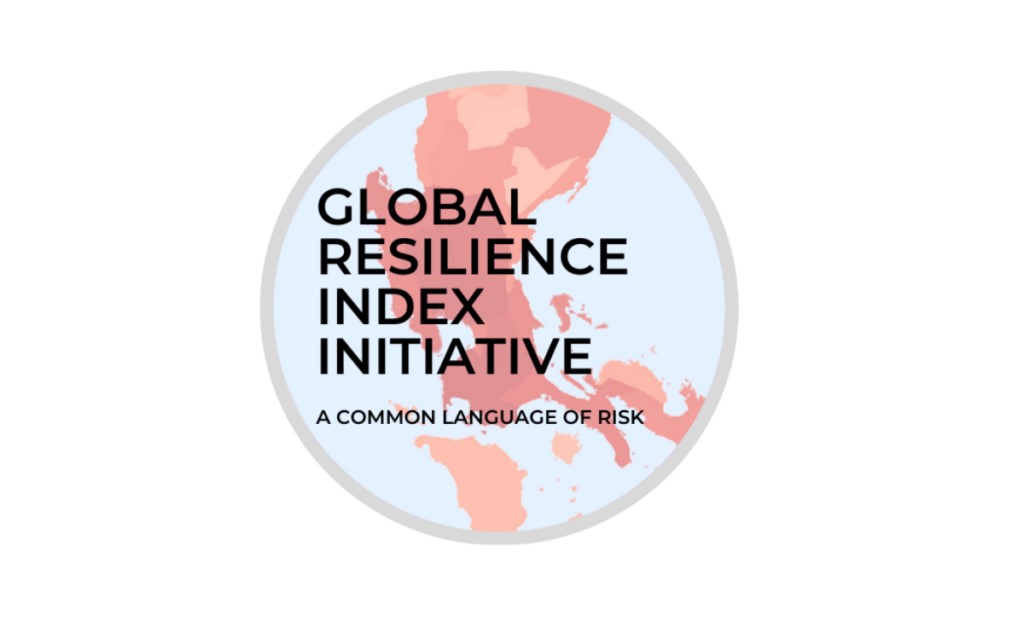
- Mission: The mission of the GRII is to address the data emergency that is contributing to the climate crisis by helping sectors across the global economy quantify the value of building climate resilience and the costs of doing nothing.
- History: The Global Resilience Index Initiative (GRII) was formed in late 2020 to step forward and help enable open access reference information for climate risk measurement and disclosure and to support the growth of resilient economies and societies.
- Goals of the Coalition:
- To provide global open reference risk data developed using insurance risk modelling
- To provide shared standards and facilities applicable to a wide range of uses:
Corporate climate risk disclosure, national adaptation planning and reporting, and the planning of pre-arranged humanitarian finance.
- Funding: GRII has been initiated with partial funding and in-kind contributions from the insurance sector and partner institutions.
Need for Climate Resilience
- Increasing Catastrophe Costs: Natural catastrophes cost nearly $200bn globally in 2020. Since 1970, over 2 million people have died in climate-related disasters; 9 out of every 10 in developing countries.
- Bleak Climate Future: Recently, IPCC AR6 report painted the clearest picture yet of the risks we face and underlined the urgency of investing in adaptation and resilience.
- Aligning Finances to Targets: This initiative is imperative, as it shall help in understanding which financial flows and investments are Paris-aligned (Paris Climate agreement targets).
- Without this, we will not achieve the Net Zero transition needed for 1.5 degrees Celsius (maximum rise of global temperature over pre-industrial levels).
How will GRII help in Climate Resilience?
- GRII will provide high-level metrics “across the built environment, infrastructure, agriculture and societal exposures”
- The curated, open-source resource can be used in aggregated risk management across sectors and geographies.
- The outcomes of this risk analysis will help close the insurance protection gap and direct investment and aid to where they are needed the most.
- The model will help countries focus on national adaptation investments.
Sources:
Plastic Waste due to COVID 19
In News
A recent study has observed that COVID-19 pandemic has generated around 8 million tonnes of plastic waste.
About the News
- A research has found that the COVID-19 pandemic has generated more than eight million tonnes of plastic waste globally, with over 25,000 tonnes of it entering the oceans.
- A significant portion of this ocean plastic debris is expected to make its way onto either beaches or the seabed within three to four years.
- A smaller portion will go into the open ocean which will eventually be trapped in the centres of ocean basins resulting in garbage patches getting accumulated in the Arctic Ocean.
Observations of the Study
- Increased Demand for Single use Plastics: The pandemic has led to an increased demand for single-use plastics such as face masks, gloves, and face shields.
- Medical Waste: The amount of medical waste was found to be substantially larger than the amount of waste from individuals. Most of it came from Asian countries, even though these countries did not have most of the cases.
- Water Bodies accounting for Plastic Wastes: Asian rivers account for 73% of the total discharge of plastics, with the top three contributors being the Shatt al-Arab, Indus, and Yangtze Rivers, which discharge into the Persian Gulf, Arabian Sea, and East China Sea. European rivers account for 11% of the discharge, with minor contributions from other continents.
- Plastic accumulation zone: With the Arctic ecosystem already being vulnerable due to its harsh environment and high sensitivity to climate change, 80% of the plastic debris intrusion into it will sink quickly resulting in a circumpolar plastic accumulation zone by 2025.
- Solution for management:
- Better management of medical waste in epicentres, especially in developing countries,
- Creating global public awareness of the environmental impact of personal protection equipment (PPE),
- Development of innovative technologies for better plastic waste collection, classification, treatment, and recycling.
- Development of more environmentally friendly materials are possible ways to deal with the growing global plastic problem.
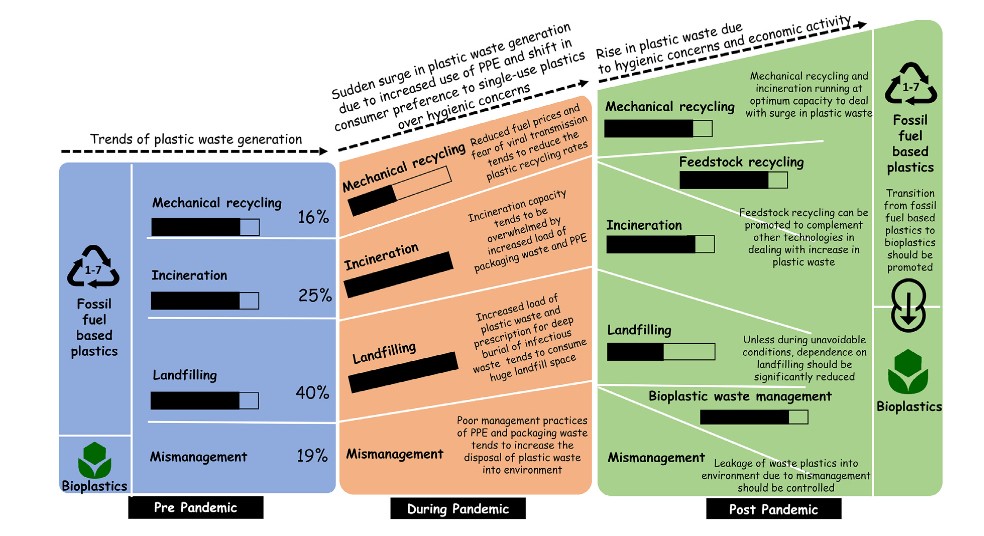
Source:
Indiscriminate use of the Unlawful Activities (Prevention) Act (UAPA)
In News
Tripura police booked 102 social media account holders including journalists under the Unlawful Activities Prevention Act (UAPA) for allegedly promoting communal disharmony with their social media posts on the recent violence in the state.
Setting the Context - Indiscriminate use of UAPA
In its present form, the Act covers-
- declaration of associations and individuals as unlawful,
- punishment for terrorist acts and activities, acts threatening the country’s security, including its economic security, and
- provisions to prevent the use of funds for terrorist purposes, including money laundering.
The UAPA is largely an anti-terror law that is supposed to be applied only in rare instances. However, it is being indiscriminately used by the government — both Union and states — at varying degrees.
- According to National Crime Records Bureau (NCRB), 2019 saw a 33% increase in cases filed under the UAPA compared to 2016.
- According to Government data presented in Lok Sabha, there has been a 72% increase in the number of arrests made under the UAPA in 2019 compared to 2015.
- According to government reply in Parliament, only 2.2% of cases registered under the UAPA between 2016 and 2019 ended in convictions.
A very low conviction rate indicates that the UAPA is indiscriminately used by the police to harass and intimidate several prominent human rights leaders, civil society leaders, agitating leaders and even protesting students.
Problems with the UAPA: What makes the UAPA so stringent?
- Vague provisions giving wide powers to government: While the definition of a ‘terrorist’ remains vague in this law, the amendments in 2019 have given the Central government wider power to designate a person as a “terrorist” without a trial.
- In addition, individuals can be named as terrorists even though they may not have any connection or affiliation with the terrorist organisations listed in the First Schedule of the UAPA.
- Procedural Challenges:
- While 90 days are provided for completion of the investigation under UAPA, a person can be detained in Jail for upto 180 days without even filing a chargesheet which defeats the purpose of a speedy and fair trial.
- The UAPA does not provide a judicial mechanism for either individuals or organisations listed as terrorists to challenge such a designation.
- Bail provisions under UAPA: Under the Act, bail cannot be granted to a suspect if the court is of the opinion that there are reasonable grounds to believe that the charges are prima facie true. This is specifically one of the most draconian provisions as it prompts the Court to consider the version of the prosecution alone while deciding the question of bail, virtually rendering it impossible for anyone to obtain bail until the completion of the trial.
The UAPA in relation to Human Rights/Fundamental Rights
UAPA being a piece of ‘security legislation’ allows the government to arrest the citizens that might commit crimes mentioned under it. It is problematic legislation for various reasons.
- Firstly, it does not allow dissent. It criminalizes mere thoughts and political protests that cause “disaffection” with the state. This can be viewed as contrary to citizens’ right to expression under Article 19 which is also a collective right of groups and unions.
- Secondly, it can simply be used to bypass fundamental rights and procedures. For instance, those arrested under UAPA can be put under detention/jail up to 180 days without a charge sheet being filed. It may violate Article 21 of the constitution.
- Thirdly, it confers upon the government broad discretionary powers thus undermine the principle of Rule of Law.
Role of Judiciary in relation to misuse of UAPA
The judiciary is the most critical institution to protect and provide timely redressal of violation of fundamental rights. However, the text of the UAPA law sometimes poses immense challenge to the courts in interpreting the law by limiting the space for judicial discretion and adjudication. This is more evident in the context of bail.
- There have been contradictions in various judgments of the Supreme Court and High Courts in regards to the bail petitions under UAPA.
- In Thwaha Fasal vs Union of India, the Supreme Court on October 28, 2021 held that
- “Mere association” with a terrorist organisation as a member or otherwise is not sufficient to attract an offence under the UAPA. The association and the support have to be with the intention of furthering the activities of a terrorist organisation.
- An accused in such cases under UAPA was “entitled” to bail if the court was satisfied that “there are no reasonable grounds for believing that the accusation against the accused is prima facie true”.
- On the contrary in National Investigation Agency vs Zahoor Ahmad Shah Watali(2019), the Court said that by virtue of Section 43D(5) of UAPA, the burden is on the accused to show that the prosecution case is not prima facie Section 43D(5) deals with provision of bail.
Approach of Judiciary
- In the above cases the two mutually contradictory approaches of the court are evident- One is to read and apply the provision literally and mechanically (reflected in Zahoor Ahmad Shah Watali) which has the effect of curtailing the individual freedom as intended by the makers of the law. In contrast to this approach, there could be a constitutional reading of the statute, which perceives the issues in a human rights angle and tries to mitigate the harmful impact of the law (reflected in Thwaha Fasal case).
- In Thwaha Fasal case, the Court has asserted the primacy of judicial process over the text of the Law, by way of an interpretative exercise. In Union of India vs K.A. Najeeb (2021), the court said that even the stringent provisions under Section 43D(5) do not curtail the power of the constitutional court to grant bail on the ground of violation of fundamental rights.
Conclusion
UAPA may be desirable given the volatile security situation of the country. However, it should be used sparingly. The UAPA modelled as an anti-terror law deviates from ordinary legal procedures, creating its own “exceptional” regime where constitutional safeguards of the accused are curtailed to become either non-existent or inaccessible. Nonetheless, even within the draconian constraints of the UAPA, much can be achieved if a responsive and independent judiciary follows the basic principles of natural justice and due process as it held in K.A. Najeeb case.
Sources:
This Day in History - National Education Day
On November 11, 1888, Maulana Abul Kalam Azad was born. National Education Day is celebrated every year on November 11 in India to mark the birth anniversary of Maulana Abul Kalam Azad. Maulana Abul Kalam Azad served the country from 1947 to 1958 as the first Minister of Education in Pandit Jawaharlal Nehru's cabinet. A reformer and a freedom fighter, Maulana Abul Kalam Azad was not merely a scholar but committed to building the nation through education. In 1920, Azad, along with two others, became one of the founding members of the Jamia Millia Islamia University. Under his tenure as the education minister, the ministry established the first Indian Institute of Technology (IIT) in 1951 and the University Grants Commission (UGC) in 1953.
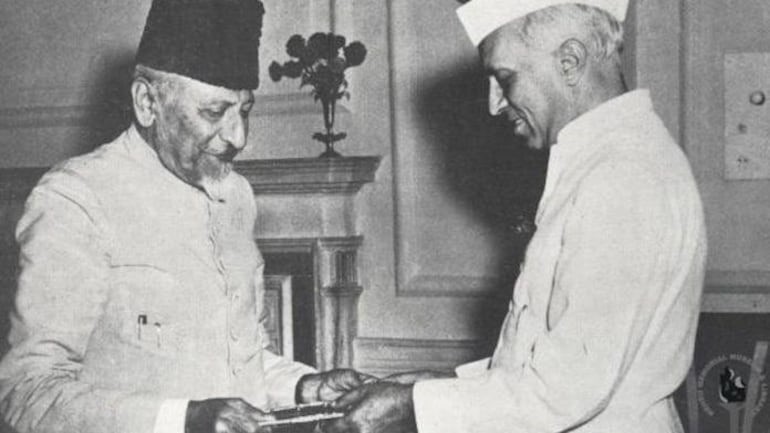
Source:
Image of the Day - Pink Leopard
This is image of rare pink leopard sighted in Ranakpur hills of Rajasthan. Experts believe that the different colour is perhaps due to mutation. The Indian leopard usually has its coat spotted on a pale yellow to yellowish-brown or golden background. But this pink leopard has reddish-brown skin and distinctly different spots. Such strawberry-coated leopards have been seen in South Africa more than once. The leopard seems to have a light coat colour and a natural variation but not an albino.” Albinism is a congenital absence of any pigmentation or colouration in an animal, plant or person.

Source:
Demoiselle cranes
- Context: Around 70 demoiselle cranes have been found dead in Kaparda village near Jodhpur being affected by Newcastle disease.
- Newcastle disease is a highly contagious disease caused by a virus belonging to the paramyxovirus family which affects the respiratory tracks of birds.
- Demoiselle cranes (Anthropoides virgo) are small gray cranes of open expansive habitats.
- Small size distinguishes this species from other cranes. They feed on plants, insects, grains and small mammals. They are categorized as “Least Concern” in IUCN Red List.
- They fly thousands of kilometers to various parts of Rajasthan’s Marwar and Phalodi regions from the wetlands of Mongolia and Caucasus in October.
- They are found in 47 countries around the world primarily inhabiting fields, deserts, steppes, and plains with water in general vicinity.

Source:
Srinagar-‘Creative City’
- Context: UNESCO has picked up Srinagar among 49 cities as part of the creative city network.
- The UNESCO Creative Cities Network (UCCN) aims to promote cooperation with and among cities that have identified creativity as a strategic factor for sustainable urban development.
- The network was created in 2004 and involves folk art, media, film, literature, design, gastronomy and media arts.
- There are 246 cities that currently make up this network which work together towards a common objective of placing creativity and cultural industries at the heart of their development plans at the local level and cooperating actively at the international level.
- Srinagar has been selected under the Crafts and Folk Arts category as its crafts are not only economic assets, but they seem to widely contribute to the building of community identities.
- Jaipur (Crafts and Folk Arts) in 2015, Varanasi and Chennai (Creative city of Music) in 2015 and 2017 are the only cities that have so far been recognized as members of the UCCN for creative cities.

Source:
Fishing “droughts”
- Context: Fishing “droughts” have become common along the coastal villages in the recent past.
- Fishing “drought” refers to the failure of a fishing season characterized by decrease in the fish varieties, skyrocketing of fish prices etc.
- Overfishing, pollution from the effluents discharged into the sea, recent events of global warming etc are the major reasons of the drought.
- Added to this long term changes in the seawater temperature, acidity, deoxygenation, increasing intensity of cyclones and sea level rise especially in the Bay of Bengal have impacted the marine ecosystem and its productivity.
- Due to this, majority of the resident fishermen move out of their respective villages in search of better livelihood. This leads to numerous ghost hamlets dotting the coast.
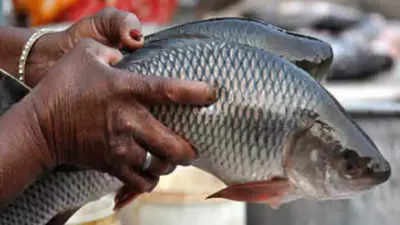
Source:
Srinagar-‘Major Airport’
- Context: The Union Ministry of Civil Aviation has declared Srinagar International airport as a “major airport”.
- The Centre designates an airport as a major airport under the Airports Economic Regulatory Authority Act, 2008 if it crosses a particular volume of annual passenger traffic of at least 35 lakh.
- As per Section 13 of the Act, the Airports Economic Regulatory Authority (AERA)has been mandated to determine the tariff for the aeronautical services rendered at major airports.
- For the non-major airports, these tariffs are determined by the Airports Authority of India (AAI), which is a body under the Ministry of Civil Aviation.

Source:
India’s COP26 pledges: Ambitious, but ambiguous: ORF
Essence: The article talks of climate pledges undertaken by India at the CoP26 meet recently. India’s ambitious pledges on decarbonization- the “Panchamrit” at COP26 are not free from the cloud of ambiguity. The pledges like increasing of fossil fuel energy capacity, meeting 50 percent of energy requirement from renewable energy, reducing the carbon intensity in the economy by less than 45 percent are difficult goals to achieve. These goals seem not very pragmatic after analysing the present state of India’s renewable energy sector and their economic impact. India’s commitment to ‘net-zero’ emission is admirable but not free from contradiction. Total switch from coal to natural gas will lead to serious economic challenges and risk to India’s energy security. Also, if India’s current industrial policy, which focuses on increasing domestic manufacturing succeeds, meeting the goal of decarbonization will also become somewhat difficult as manufacturing is energy intensive and even carbon intensive.
Why should you read this article?
- To know what are the various pledges made by India at COP26.
- To understand what are the ambiguities in these pledges.
Source:
How loopholes in Civil Procedure Code delay justice: IE
Essence: The article highlights the gaps in the justice delivery system India. It talks about the principal of natural justice which is often been misused in most of the cases to delay the outcomes. The side which has vested interest in continuation of case uses this principle and the court rules permits it. What everyone should realize is, it is just not that “justice hurried is justice buried” but sometimes just delayed is also considered as justice denied.
The article also stresses that legal processes are not always about common sense. Since it bases itself more on evidence, it sometimes takes courts years to establish that common sense is right. So, filling up the vacancies and getting more judges won’t help. What we need is a substantive amendment that provides a deadline for the case to be resolved.
Why you should read this article?
- To understand the gaps in justice delivery system of the country.
- To understand the corrective course of action needed to address the gaps in the system.
Source:
Urban Deluge- Sansad TV
The heavy rainfalls in Tamil Nadu and flood disaster in and around Chennai have brought to light the issue of repetitive urban floods. These urban floods are significantly different from rural floods- due to highly populated areas, random spatial expansion and quick flooding. The drainage basins are filled with urban land use, deforestation and concrete structures lead to blockage of water flow aside poor solid waste handling. It results in increase in flood volumes by as much as 6 times, increased exposure to infection, loss of life and livelihood.
Important ways to mitigate these urban floods is to have master plans for urban landscapes, GIS based flood safety plans, sustainable drainage design and forecasting, reservoir management. In case of imminent threat of urban floods, one needs to follow the instructions laid out by NDRF like keeping essential items at high ground, adhering to IMD warnings, etc.
Why should you watch this video?
- To understand the extent of urban floods and causes for its recurrence.
- To gain an insight into flood mitigation and management measurues.
Source:
A man of substance: Abdul Jabbar
Background
- Bhopal Gas tragedy of 1984 took a massive toll on the lives of many people in and around Bhopal.
- One such person was Abdul Jabbar, who was a survivor of the incident but the changes he made in the lives of others is commendable.

About Abdul Jabbar
- Abdul Jabbar fought a lonely and never-ending battle for the survival of the Bhopal Gas Tragedy survivors in 1984.
- Over the course of three decades, his tireless efforts resulted in the physical and economic rehabilitation of countless victims.
- He stayed with the survivors' families in order to provide better services to them, including medical and economic rehabilitation, filing complaints against corrupt officials, and demanding a bed and medicine for a gas victim.
- He provided them with vocational training along with arranging them work post the training is completed.
- Awarded the Padma Shri 2021 posthumously for his relentless efforts towards the struggle for justice for the Bhopal gas victims.
Lessons to learn:
Empathy, Dedication, Social Work, Selfless efforts.
Quote:
To give real service you must add something which cannot be bought or measured with money, and that is sincerity and integrity.-Douglas Adams
Source:
Share the article
Get Latest Updates on Offers, Event dates, and free Mentorship sessions.

Get in touch with our Expert Academic Counsellors 👋
FAQs
UPSC Daily Current Affairs focuses on learning current events on a daily basis. An aspirant needs to study regular and updated information about current events, news, and relevant topics that are important for UPSC aspirants. It covers national and international affairs, government policies, socio-economic issues, science and technology advancements, and more.
UPSC Daily Current Affairs provides aspirants with a concise and comprehensive overview of the latest happenings and developments across various fields. It helps aspirants stay updated with current affairs and provides them with valuable insights and analysis, which are essential for answering questions in the UPSC examinations. It enhances their knowledge, analytical skills, and ability to connect current affairs with the UPSC syllabus.
UPSC Daily Current Affairs covers a wide range of topics, including politics, economics, science and technology, environment, social issues, governance, international relations, and more. It offers news summaries, in-depth analyses, editorials, opinion pieces, and relevant study materials. It also provides practice questions and quizzes to help aspirants test their understanding of current affairs.
Edukemy's UPSC Daily Current Affairs can be accessed through:
- UPSC Daily Current Affairs can be accessed through Current Affairs tab at the top of the Main Page of Edukemy.
- Edukemy Mobile app: The Daily Current Affairs can also be access through Edukemy Mobile App.
- Social media: Follow Edukemy’s official social media accounts or pages that provide UPSC Daily Current Affairs updates, including Facebook, Twitter, or Telegram channels.

